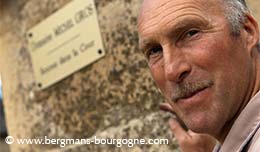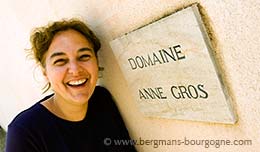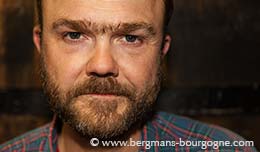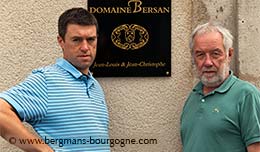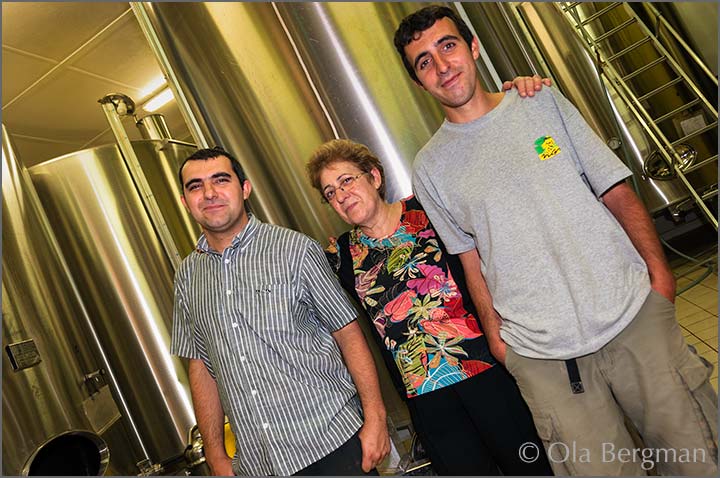
eauregards, the Chablis premier cru. Today it's part of the vineyards owned by Domaine George, but during the Second World War it was the Germans' shooting range.
– My father bought our Beauregards in 1988 and replanted it in 1989, says David George-Perpiña. Before that there hadn't been much wine-growing there for 50 years. He put together our parcel from acquisitions from five different owners. When he began working in Beauregards he would find many shells. But being a typical Burgundian my father would just pick them up and throw them away.
 This is Domaine George in Courgis, a small village ten minutes by car from Chablis. The history of the domaine goes back to the 1940's, but it wasn't until relatively recently, in 1997, that they began bottling their wine themselves instead of having the grapes sent off to the cooperative.
This is Domaine George in Courgis, a small village ten minutes by car from Chablis. The history of the domaine goes back to the 1940's, but it wasn't until relatively recently, in 1997, that they began bottling their wine themselves instead of having the grapes sent off to the cooperative.
In these cellars chardonnay is king. No red wine. Only Chablis, from Petit Chablis up to premier cru. No sight of oak, just stainless steel, and a total of 16.5 hectares under vines.
– We don't know that much about the history of the domaine, says David George-Perpiña. There has been several fires in Courgis and much of the archives has been lost. My paternal grandfather arrived here during the Second World War. He was a prisoner of war. The Germans placed them in different villlages. My grandfather came from the Ardennes, which the Germans, like Alsace, considered as German-speaking territory. But since he didn't speak German he was placed in Courgis.
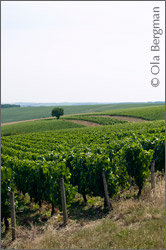 There, in Courgis, he met his future wife and began working for her family. They made wine, but if it was mainly for personal consumption or sold to clients is unknown.
There, in Courgis, he met his future wife and began working for her family. They made wine, but if it was mainly for personal consumption or sold to clients is unknown.
– We know one thing, says, David George-Perpiña, After the war, in the 1950's, my grandfather received a medal for his wine at an international tasting in Paris. He then chose to join the cooperative in Chablis. Why he decided to do this we don't know. Perhaps he didn't have a press. At the time it was easy to make wine, you didn't need much to get started. The difficult part was selling the wine, so maybe that was the reason.
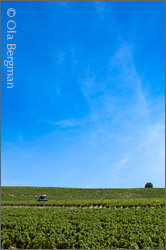 Having completed his military service in 1972, David's father, Michel George, decided to continue the tradition. He too decided to go with the cooperative, so he signed with La Chablisienne.
Having completed his military service in 1972, David's father, Michel George, decided to continue the tradition. He too decided to go with the cooperative, so he signed with La Chablisienne.
– But the contract he signed was a 50-year-contract. It meant he couldn't leave the cooperative until he had turned 71. But for my father there wasn't really a problem. The cooperative sold all his wine. He met my mother there. She was a secretary at La Chablisienne and they got married in 1983.
– Back then there were 500 winegrowers in the cooperative. Today there 300.
– Later on, at a meeting with the cooperative, my mother started asking questions. Nobody had done this before, so two days later she was asked by the head of the cooperative if she and my father were interested in becoming part of a group of young winegrowers. Nathalie and Gilles Fèvre and the Dampt family were part of this group as well. The task was to suggest new things for the cooperative and one of the first things they took on was to limit the contracts to 25 years.
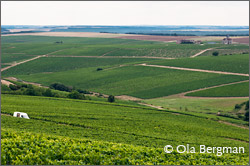 This meant that Michel George could start bottling his own wine in 1997. To begin with quantities were small; a large part was sold off to négociants such as Laroche and William Fèvre. Then in 2004 when his two sons, Jonathan and David, graduated from wine school in Beaune quantities grew. Today 40 per cent of the production are bottled at the domaine.
This meant that Michel George could start bottling his own wine in 1997. To begin with quantities were small; a large part was sold off to négociants such as Laroche and William Fèvre. Then in 2004 when his two sons, Jonathan and David, graduated from wine school in Beaune quantities grew. Today 40 per cent of the production are bottled at the domaine.
Domaine George produces two different cuvées of village level Chablis – one straight Chablis and one Chablis Vieilles Vignes, old vines. The grapes come from two different climats around Courgis – Talvat and Côte de Jouan.
– We don't have any set rules for the blend of the two climats, explains David George-Perpiña. We decide just after the pressing, when we know what we have. Usually we make a 60-40 blend. 60 per cent Côte de Jouan and 40 per cent Talvat. We use the same principles for the Chablis Vieilles Vignes. For that cuvée the vines are between 45 and 60 years old.
 You'll find the premier cru Beauregards just south of Courgis. There is a picnic area just above vines and in the distance you can see Préhy. Being quite steep it is difficult to work this vineyard with a tractor.
You'll find the premier cru Beauregards just south of Courgis. There is a picnic area just above vines and in the distance you can see Préhy. Being quite steep it is difficult to work this vineyard with a tractor.
– The soil is orange/pink and deep, says David George-Perpiña. Not particularly stony, I guess it is because it so steep. Most of the bigger stones have rolled down the slope. It is very well-exposed. You have sun all day here, from six in the morning to four five in the afternoon.
 – The only problem is with young vines. In a dry year like 2006 they shut down. Vines are like humans, if they don't get enough water they can't do anything else. In 2006 the well-exposed young vines were later to ripen than the less well-exposed old vines. It takes many years before the vines can supply themselves with enough water. In 2015 our Beauregards vines will be 25 years old. After that water will not be an issue.
– The only problem is with young vines. In a dry year like 2006 they shut down. Vines are like humans, if they don't get enough water they can't do anything else. In 2006 the well-exposed young vines were later to ripen than the less well-exposed old vines. It takes many years before the vines can supply themselves with enough water. In 2015 our Beauregards vines will be 25 years old. After that water will not be an issue.
In Beauregards all work, except for the harvest, is done by hand.
Conditions at Domaine George's other premier cru, Montmains, is quite different. The vines were planted in 1972 and the soil at the top of the slope is almost non-existent, just between five and ten centimetres.
– Below that is the rock. A few years ago I tried to make a whole with the tractor to plant a new vine. It didn't work; I thought I would destroy the tractor. It is obviously not a problem for the vines to grow there, but for me and the tractor it was a problem, laughs David George-Perpiña.
– In the summer you can have lots of rain, but the winds dries everything in Montmains in no time.There are no problems with rot or diseases here. In dry years it can be a bit difficult for the vines. And you can't use a tractor to plough; you'll need a tank. It's our best vineyard, but it's difficult to work there.
– Compared to the Beauregards this wine needs more time to come around. They are made the same way, but Montmains requires more time.
© 2011 Ola Bergman










